VCE Solutions: 'Consumers Want To Reduce CO2, Without Sacrificing Convenience'
We talk to VCE Solutions about the integration of sustainability and agility in e-commerce logistics, and the future of composable commerce.

What are the most important e-commerce trends in 2024 and beyond? We asked a handpicked selection of recognised industry experts for their predictions. Here's what they had to say...
First, some background: global online retail sales exceeded the $6 trillion mark for the first time in 2023. According to forecasts, this is expected to grow to $8.1 trillion by 2026.
Yet with growth comes change. More and more competitors are entering the market every year, and technological progress is reaching unimagined levels of maturity. Consumer expectations are also rising enormously.
To be successful in this dynamic market, brands and retailers need to keep an eye on the latest trends and technologies.
So we asked seven industry experts for their predictions on the most promising e-commerce trends for 2024. The list ranges from "live shopping" to real-time data, predictive analytics and more. Let's dive in.
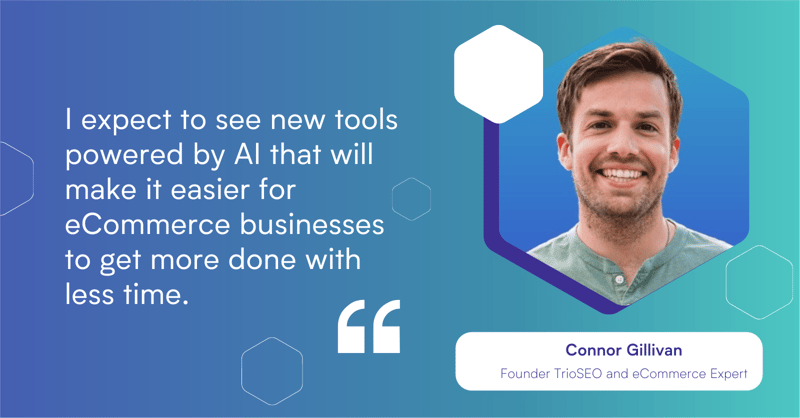
One of the most important trends for this year - surprise surprise - is definitely going to be artificial intelligence. After 2023 marked the beginning of the era of AI, the possibilities it creates will make even greater leaps this year.
This is particularly evident in the streamlining of processes and the improvement of general business performance.
Connor Gillivan, founder of TrioSEO, says: "What's coming for e-commerce in 2024? The implementation of AI tools to make e-commerce operations and marketing more efficient and organized. Running an e-commerce business involves SO many moving parts - supplier relationships, marketplace management, product listings, customer service - the list goes on and on."
"In 2024, I expect to see new tools powered by AI that will make it easier for e-commerce businesses to get more done with less time. The only caveat is that we must not rely blindly on AI tools. Rather, it's a combination of humans + AI that will create the biggest wins."
Retailers and brands should therefore not get carried away by buzzwords. Rather, it's important to understand how performance-enhancing AI functions can be used practically in your own company.
Which brings us directly to the second trend in e-commerce:
Using machine learning principles, artificial intelligence can perform real-time analytics to predict future demand, determine optimal inventory levels such as minimum stock levels, and optimize entire supply chains for greater efficiency and reliability.
AI will also optimize the user experience (UX) by directing consumers exactly where they need to be during the shopping process. For online retailers, this means being able to predict their customers' future preferences and offer an even more personalized customer journey.

A great example of the innovative use of AI in e-commerce is our partner Cloudinary with its AI-powered digital asset management (DAM).
Kaleigh Moore, freelance e-commerce writer for media including Forbes, Vogue Business and Inc. magazine, emphasizes the impact of AI on digital, visual content: "I think AI is going to become a big part of the imagery process on product detail pages. I expect to see a lot more product pages leveraging AI-powered visuals."
Sara Du, CEO & Co-Founder of Alloy Automation, mentions another e-commerce trend in addition to operational agility: “I believe we'll see renewed focus next year on omnichannel experiences and operational agility. For the former, brands are realizing they can't rely solely on DTC, and need to diversify where they're selling online.
"Brands need to ensure that they can manage the flow of sales across different online platforms such as marketplaces (Faire, eBay, etc.) and live shopping (e.g. TikTok Shop, Whatnot, etc.). We've also written about how commerce SaaS solutions can help brands in this regard," says Sara.
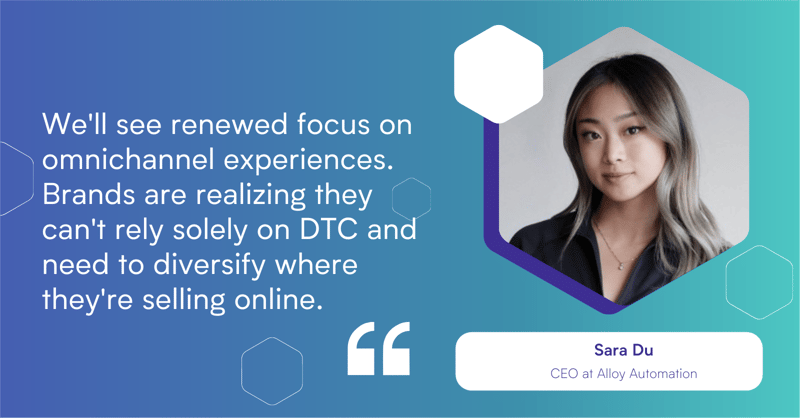
Live shopping is the buzzword of the moment: watching other people testing or purchasing products. While the average online store achieves a conversion rate of between 2.5 percent and 3 percent, live shopping achieves an average of 9%.
This development reflects a larger trend: 37% of Generation Z regularly shop online for entertainment. It's therefore clear that consumers are increasingly looking for a seamless integration of entertainment and shopping.
From influencer-led collections to community-based marketing and the so-called "infinite loop" on TikTok, brands are using social commerce collaborations with influencers to deliver authentic messages. This shortens the purchasing process and increases the willingness to buy.
Kapten & Son is a pioneer in social commerce on the German-speaking market. The Cologne-based lifestyle brand recognized the potential early on and was able to continuously expand and improve its sales and marketing strategies thanks to the Actindo Core1 commerce ERP. This led to:
In recent years, the strategy and software approaches of headless, composable commerce and MACH (microservices-based, API-first, cloud-native and headless) have been discussed intensively and have become a central trend in e-commerce.
Topics such as ROI (return on investment) and time-to-value are currently coming to the fore again. A shift in the area of composable commerce is emerging for 2024: away from individual applications and towards a central role within e-commerce platforms. The focus will be on products that can be integrated and synchronized more efficiently into the respective corporate landscape.
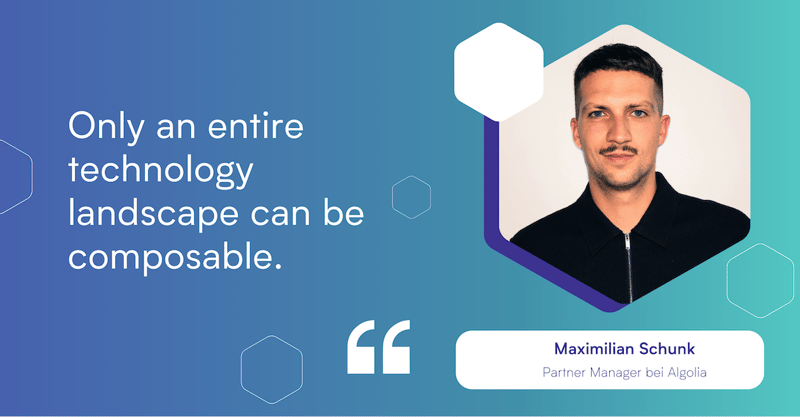
Maximilian Schunk, Partner Manager at Algolia, brings an important aspect to the discussion about composable commerce: "Only an entire technology landscape can be composable, never a single tool. It's easy to get lost in the technical functionality of the tools. However, you should never lose sight of the 'business value' and prioritize accordingly."
Our tip: Focus on clearly defining the role of your e-commerce platform. You can then develop a tailored composable commerce system that supports the necessary operational flexibility.
More and more customers prefer to communicate with brands via direct messages (DMs) on social media, especially for customer service inquiries.
Using artificial intelligence, brands and retailers can further expand their omnichannel strategy in the area of customer care and offer consumers coherent support across all touchpoints.
Carolin Schwarz, Partner Manager at our partner GREYHOUND Software, emphasizes: "Today's customers expect support on all channels, 24/7."
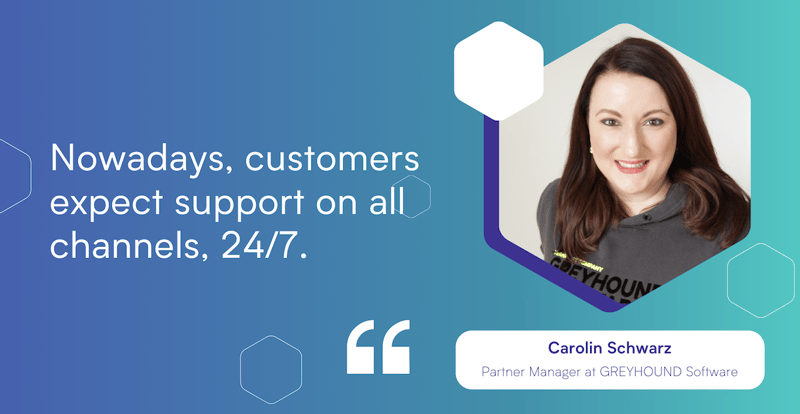
Chatbots are also in vogue: "Thanks to new, AI-supported automation, bots can be created for common chat and messenger channels. This means that e-commerce customer service is available day and night," says Carolin.
Real Insights: According to our exclusive YouGov study on post-purchase communication, over two thirds (70%) of German consumers expect an AI chatbot in customer service to understand most queries in plain text.
Consumer expectations of delivery speed are rising, and same-day delivery will remain one of the most important trends in 2024 - especially as there's still plenty of room for innovation.
Companies are increasingly investing in automated workflows and robotics to ensure fast delivery times and keep up with customer expectations.
(1).png?width=800&height=533&name=Actindo_Shipping%20and%20Fulfillment(1)(1).png)
Back to Kapten & Son: after implementing the Actindo Core1 as a central operating platform, the company has achieved Amazon-like order and shipping processing - with only 180 seconds from order to picking. Even in sales-intensive phases such as Black Friday, customers received their goods just 23 hours after ordering.
Online shopping is becoming increasingly global, and customers are no longer just looking for products in their home market. Retailers must therefore increasingly pursue a locally adapted strategy in several countries.
Particular attention is being paid to emerging markets such as the United Arab Emirates (UAE), particularly Dubai, as well as selected Asian countries. Digital commerce has experienced an enormous upswing there in recent years - and the trend is rising.
Southeast Asia dominates the top 10 e-commerce markets in terms of sales growth. With growth of 18.6 percent in 2023, the region is the fastest growing e-commerce region in the world.
Online retail in the UAE is also booming: with an average spend of 332 US dollars per person per online purchase, Dubai leads the world. This figure is significantly higher than the European average of 73 US dollars per person per purchase.
In view of these developments, companies will continue to drive forward their internationalization in 2024 in order to benefit from the opportunities there.
9. Ongoing Differentiation of Marketplaces
As part of their internationalization strategy, retailers and brands will seek to expand their global reach by selling on online marketplaces. Amazon, eBay and co. as well as local niche marketplaces offer an excellent opportunity to test the sales potential in new countries.
When choosing the right marketplace, it is important for retailers and brands to individually consider how and where to position themselves.

Valerie Dichtl, founder of Marketplace Uni, advises: "In 2024, it will be even more important to make the marketplace business profitable. Keep an eye on all key figures in order to diversify your own marketplace portfolio across the relevant marketplaces. This is the basic prerequisite for a successful marketplace business."
Back in 2019, Gartner predicted that over 100 million consumers will be shopping with augmented reality (AR) by 2020. More and more retailers are using augmented reality (AR) and virtual reality (VR) to offer their customers an immersive (interactive and intensive) shopping experience. For example, consumers can try on or try out products virtually, and get a better feel for it.
This reduces mispurchases, improves customer satisfaction and pays off. According to one study, the conversion rate for companies with AR and VR increases by 94% compared to companies without this content.

Credit: Demodern
The Swedish furniture store IKEA is leading the way: with its IKEA Place app, customers can furnish their virtual home with furniture. You can find this and other innovative shopping experiences from successful brands such as Disney, Apple and others in our blog article "18 successful omnichannel examples in e-commerce".
Consumers expect increasingly flexible payment options that are both easy to use and secure. In addition to the traditional payment methods of credit cards and giro pay, digital wallets such as Apple Pay, Google Wallet and PayPal have become firmly established.
Klarna, PayPal and Buy Now Pay Later (BNPL) are also trending. According to forecasts, BNPL payments are expected to account for around 24 percent of all e-commerce transactions by 2026 - a significant increase compared to 9 percent in 2021.
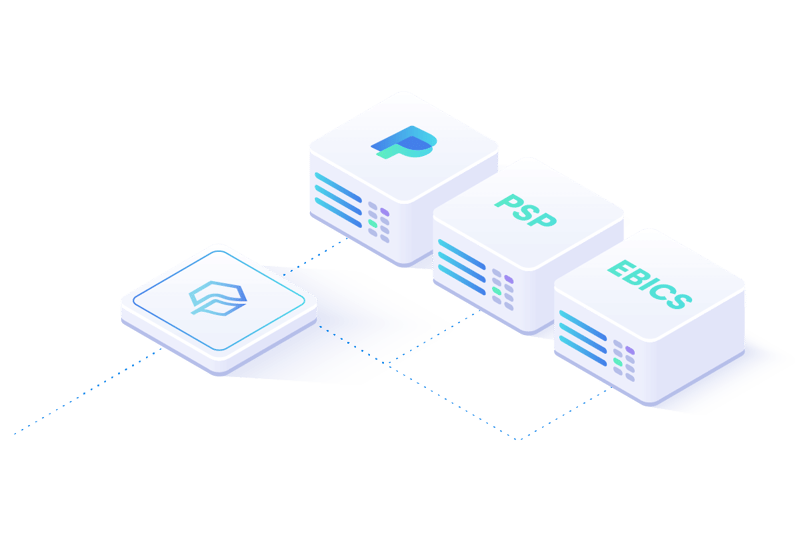
Actindo tip: Don't just offer multiple payment options - make the entire checkout process faster and less complicated. This means that your web store should support a seamless checkout process on all devices.

The integration and orchestration of data from different systems and cross-channel real-time visibility are vital in today's e-commerce environment. With up-to-date and accurate data, employees can collaborate, make informed decisions and ultimately increase the profitability of the business.
Real-time analytics also provides the ability to respond immediately to changes in customer behavior and improve the shopping experience. For example, all key customer data is available to your team for post-purchase communication.
The e-commerce market will continue to change in 2024 and the key to success depends on a company's openness to change, and its agility.
Diana Versteege, management consultant and online retail expert, says: "The key question is how companies can adapt to these changes. AI opens the door to 'a new world'. How do e-commerce companies deal with this? Is a strategic realignment, an upgrade or even a reinvention necessary?"
"In my experience, real change always starts internally. Only when the inner workings of a company are clearly structured can external applications and tools adapt effectively," adds Diana.
Of course, it's easier said than done: the complexity is huge and, given the rapid pace of development, it's not easy to keep track. Fortunately, there are industry experts who can help you make the most of the opportunities presented by the dynamic e-commerce environment.
As a global leader and pioneer in commerce ERP and digital operations platform with more than 15 years of experience, Actindo recognized the need for a flexible and modular software architecture early on.
Actindo Core1 is the world's most flexible, API- and cloud-based commerce platform with MACH certification and brings together the building blocks of composable commerce. It has comprehensive data integration in the central DataHub and extensive Distributed Order Management to:
Thanks to its MACH architecture, Core1 can be easily integrated as a central solution or as a scalable layer on top of existing monolithic legacy IT systems, depending on your individual requirements.
“At Actindo, we have made it our mission to enable sophisticated transactional business models across retail, e-commerce and desktop.
"We provide the single point of truth for composable commerce and enable the management of customer-centric experiences in the unified commerce era."

We talk to VCE Solutions about the integration of sustainability and agility in e-commerce logistics, and the future of composable commerce.
We spoke to Carolin Schwarz from GREYHOUND about e-commerce trends, AI's role in customer service, and staying updated in composable commerce.
We talk to Maximilian Schunk from Algolia about the current trends in product discovery in e-commerce, and the influence of AI and composable...